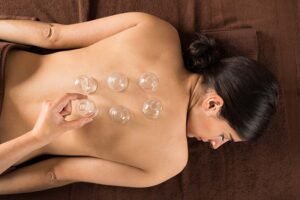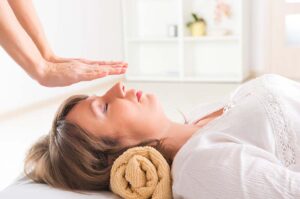Some tips to help you live better
By Deborah Jeanne Sergeant
Integrative health “brings conventional and complementary approaches together in a coordinated way,” according to the National Institutes of Health.
This can include multiple interventions in addition to conventional medicine. Integrative health is on the rise. According to www.goodtherapy.com, almost 69% of Americans use some form of complementary medicine in any given year.
The most popular modalities are (in order): massage therapy, chiropractic care, nutrition counseling, health-life coaching, acupuncture, reflexology, detoxification, B12 shots, acupressure and alternative healing, as listed on www.mindbodybusiness.com.
The growth in popularity is particularly notable considering many people pay for these services in full. Although chiropractic care is sometimes covered by health insurance, typically complementary modalities are out-of-pocket expenses.
The Buffalo region offers numerous integrative health modalities from a large variety of providers. Here are five of them:
1. Lifestyle Medicine
• How it works: “For every one of my patients, we assess diet, exercise, rest, relaxation, sleep and relationships,” said physician Susan Stone, who completed a fellowship in integrative medicine and was trained in medical acupuncture. She operates Willow Health Integrative Medicine in Syracuse.
• Why it works: “I believe in our body’s intrinsic healing mechanism and look to tap into that as much as possible,” Stone said. “I blend it with conventional medicine and help people to custom-tailor treatment. I refer people if I need to.”
• Caveats: “A lot of times, people have come to integrative or functional medicine from their own research and maybe they’ve had some bad experiences with the medical system in the past,” Stone said. “People may have a fair amount of trouble with trusting a process. Or, on the other hand, you have to — like with any treatment — be realistic about expectations.”
2. Cupping
 • How it works: “We stick silicone cups to the skin and move them around to lift up the tissue and get the blood moving,” Amanda Wells, licensed massage therapist with CNY Healing Arts based in Syracuse. “We leave them in an area for a while and massage around it and move them and massage the area that just had the suction on there.”
• How it works: “We stick silicone cups to the skin and move them around to lift up the tissue and get the blood moving,” Amanda Wells, licensed massage therapist with CNY Healing Arts based in Syracuse. “We leave them in an area for a while and massage around it and move them and massage the area that just had the suction on there.”
• Why it works: “It’s good if you have chronic tension or issues that seem to not be letting go,” Wells said. “The cups create a nice negative pressure and draws the blood into the area to get the stuck adhesions loose and gets things moving again. If you have chronic issues like a shoulder issue that never really healed or past injuries, it can help. Fibromyalgia patients often get some relief. It helps open up the tissue.”
• Caveats: “There can be bruising,” she added. “You don’t want to do it if you’re going to a wedding and your back is exposed.”
3. Reiki
 • How it works: “It is a Japanese energy healing technique,” Wells said. “We can combine it with a massage or do it as a separate treatment. The way I do it is put my hands on the body and feel where there’s constriction and depletion and the energy runs through my hands. That shifts the energetic patterns they’re holding. Anyone can get reiki.”
• How it works: “It is a Japanese energy healing technique,” Wells said. “We can combine it with a massage or do it as a separate treatment. The way I do it is put my hands on the body and feel where there’s constriction and depletion and the energy runs through my hands. That shifts the energetic patterns they’re holding. Anyone can get reiki.”
• Why it works: “The practitioner helps channel and balance energy discrepancies. Some areas are depleted; some are stagnant. The practitioner gets everything flowing again. It’s very relaxing. It’s good for people who feel ‘stuck.’ Or if you’re having a hard time unwinding.”
• Caveats: “I can’t think of any except for someone who does not like to be touched.”
4. Reflexology
• How it works: “We apply pressure and stroke specific points on the hands and feet,” Wells said.
• Why it works: “The philosophy is all the nerve endings are in the extremities,” she added. “Every part of the hand or feet has a corresponding body part. By going into the areas of the feet and hands, it affects the nervous system of the whole body. For someone that shouldn’t get a traditional Swedish massage, the reflexology can offer the benefits of the massage without the full body massage.”
• Caveats: “Anyone with an issue with their hands and feet may not be able to have it.”
5. Chinese Herbs
• How it works: “I work with women, specializing in hormonal and gut health issues. I meet with the women for an initial intake for two hours to do a health history,” said Chelsey Mollin, licensed acupuncturist, Chinese medicine practitioner and owner of Aliyah Health in Syracuse. “I look at their tongue diagnostically. Based on subjective symptoms and objective symptoms, we order the formula from a Chinese dispensary in New York, based on their symptoms.”
• Why it works: “Chinese herbs work in a formula. It’s several herbs working together in a pattern. They work to get the body back to homeostasis so the body can work out its own curative actions.”
• Caveats: It takes a little patience to see results.
6. Neurofeedback
• How it works: “It’s a non-pharmaceutical means of determining any imbalances in the brain and training the brain so brain patterns are closer to normative brain patterns by using different patterns of pulsed light and also sound pulses and frequencies of sound through headphones,” said Heidi Baldwin, practice manager and board-certified integrative nutrition holistic health coach at Integrative Medicine of Central New York.
• Why it works: “The brain mapping it will help determine the best brain training protocols for that individual,” she said. “Many times, the brain map will determine if there are certain nutritional deficit or imbalances that need correcting to improve brain function. It works for many different brain ailments or disease processes. It’s very individualized for a person’s situation. I don’t think we know the mechanism, but it trains the brain to develop more normative brain waves in different areas of the brain.
• Caveats: “For people with a history of seizures, we might modify the light’s intensity. There are no major contraindications.”
7. Acupuncture
• How it Works: “We use needles,” said Reni Fairman, nationally certified and licensed acupuncturist and owner of Origin Acupuncture in Auburn. “Clients are often afraid and thinks it will hurt like an injection needle. They’re like a cat whisker, thin and flexible. We want to get harmony going between any organ systems that are out of balance. The point prescription is specific for that person. There’s not a particular protocol.”
• Why it Works: “From a Western perspective, where we’re inserting the needles has an effect where the nervous system and vascular system meet. When we’re needling these areas, we stimulate them and propagate responses. We can have a local or distal effect on the brain, depending on where we put them and what we’re trying to achieve.”
• Caveats: “Patient education. They want something different. Western medicine is failing a lot of patients, but they’re not necessarily up to the challenge to put in the time for the work for recovery.”

